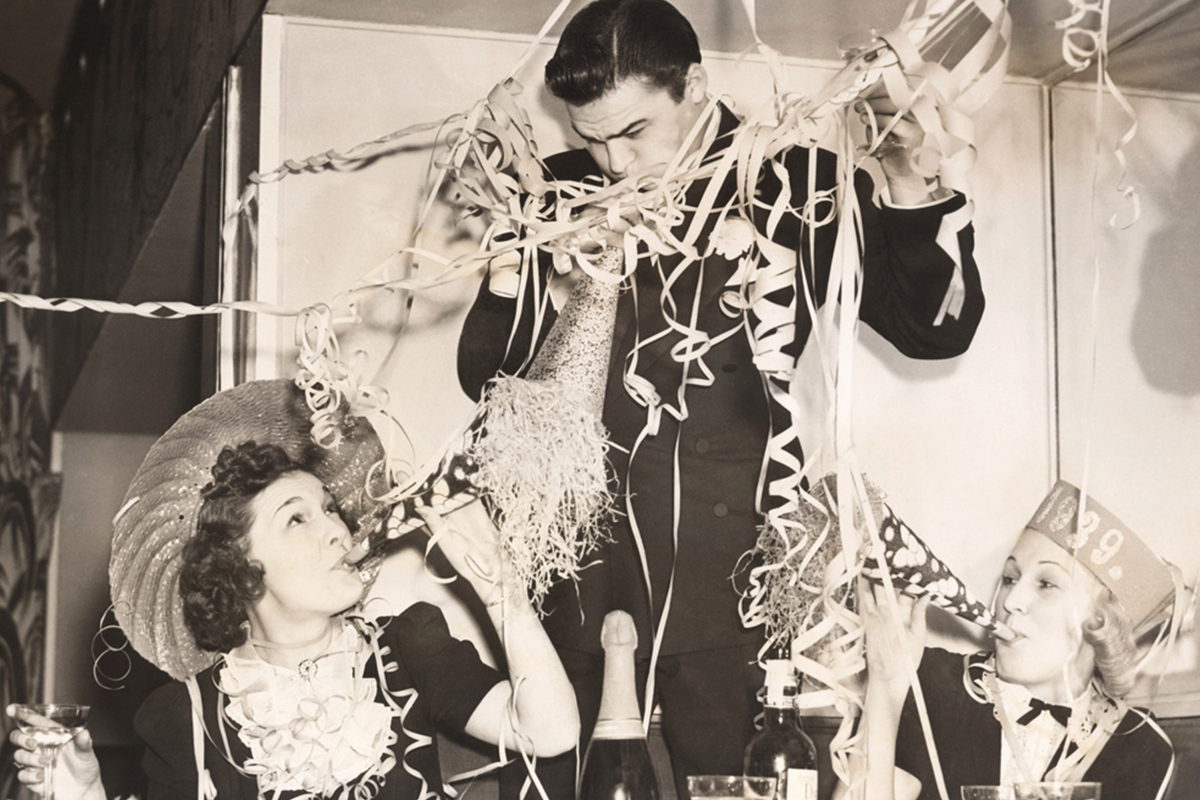
We know it’s all about the party on New Year’s Eve. But do you know how many years we’ve been celebrating this day? It turns out – a while. This New Year’s Eve, should you find yourself hunkered in the corner of a kitchen trying to spark up a little convo with a stranger you’d like to kiss at midnight, we’ve got a tip. Let them know you’re more than just a pretty face. You’re dialed into the roots of the celebration. You’ve got the Inside Scoop on New Year’s Eve.
How Long Have We Celebrated NYE?
The earliest known New Year celebration was in Mesopotamia around 2000 B.C. In case anyone poses the follow-up question, Mesopotamia was a region covering the area now, mostly known as Iraq and Kuwait.
Has NYE Always Been Celebrated on December 31?
No, it has not — the Roman calendar designated March 1 as the New Year. Their calendar had only ten months and began with March. According to History.com, the Roman emperor’s system miscalculated the length of the solar year by 11 minutes. The Roman calendar was falling out of sync with the seasons. This concerned Pope Gregory because Easter, traditionally observed on March 21, would fall further away from the spring equinox with each passing year. So, boom, new calendar.
So, NYE Doesn’t Just Happen in Times Square?
Now that most of the world’s calendar is on the “same page” so to speak, New Year’s Day is the most commonly celebrated public holiday in the world. Approximately 1 million people gather in New York City’s Times Square to watch the famous ball drop. Another 1 billion people around the world will watch the famed Times Square celebration on their TVs.
About the Ball Drop
- The first ball drop celebration in Times Square was December 31, 1907. The first New Year’s Eve Ball weighed 700 pounds and was five feet in diameter. Watch out below!
- The current New Years’ Eve ball was introduced in 2008. According to cnn.com, the improved ball is a geodesic sphere with a diameter of 12 feet. It weighs 11,875 pounds and can withstand high winds and freezing temps. To keep things interesting, Waterford Crystal introduces a different design pattern each year.
- About 2,000 pounds of confetti falls onto the crowd at midnight.
What’s the Deal with “Auld Lang Syne”?
“Auld Lang Syne” is sung at the stroke of midnight on New Year’s Eve. Scottish poet Robert Burns wrote it in 1788. The tune comes from an old folk song, but let your inquiring friends know those beautiful words “auld lang syne” literally mean “times gone by.”
What Are Some Other Traditions, You Ask?
- It’s good luck to eat black-eyed peas and greens on New Year’s Eve or Day. Consuming these foods improves your finances in the coming year. Cabbage represents bills, and black-eyed peas, coins.
- Stay away from lobster and chicken, as they are bad luck. Lobsters can move backward, and chickens scratch in reverse. These foods may bring you a “reversal of fortune.”
- If you find yourself in Italy on New Year’s Eve, grab your red underwear. Italians often wear red underwear on New Year’s Day to bring good luck all year long. The tradition dates back to medieval times.
- In some cities in Colombia, Cuba, and Puerto Rico, a male doll is created and stuffed with memories from the past year. It is called “Mr. Old Year.” At midnight, “Mr. Old Year” is set ablaze. This tradition symbolizes the erasing of bad memories.
- At midnight on December 31, Buddhist temples all over Japan ring their bells a total of 108 times. Each chime symbolizes the 108 human sins in Buddhist belief and gets rid of the 108 worldly desires in every citizen. A major attraction is The Watched Night Bell, in Tokyo.
What About the Kiss at Midnight?
- Most historians believe the traditions started with the ever-festive Romans and found its way into the rest of Europe. During the Renaissance, when Masquerade Balls were all the rage, people removed their masks at midnight. Kissing was a way of “cleaning one’s slate” for the upcoming year. It seems to us, depending on who one chooses to kiss, “one’s slate” could become a little more complicated each year with this tradition.
- English and German folklore built on this superstition that a “midnight kiss” would strengthen a budding romance. Avoiding it could mean a loveless year ahead.
If the stranger you cornered in the kitchen is still listening to you at this point, congrats. They obviously couldn’t resist your charm or getting the Inside Scoop on New Year’s Eve. So, Happy New Year, and pucker up!
